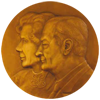
Marica B Ericson, senior lecturer in biomedical Photonics at the University of Gothenburg. She has invented a microscope technique for diagnosing a suspicious skin tumor and get answers right away. NOTE – This article is machine translated from Swedish.
Civil engineer Marica Ericson hoping to see what’s going on deeper into the skin with the help of his invention. In the long run, she hopes that doctors can use the new Microsoft technology for diagnostic purposes on a suspicious skin tumor and get answers right away.
Marica Eaton leads a research group in biomedical Photonics at the University of Gothenburg. Using non-linear optical microscopy with light particles, photons, to study skin changes.
— One can picture cell structures in intact tissue by pulse light. Then you can use laser light with high intensity, and focus it at a certain point, but that the damage occurs.
This technology has the potential to be a brand new diagnostikmetod that can give the patient test results directly without having to do the biopsy with month-long response time. Metastatic malignant melanoma is one of the deadliest cancers and it is increasing all over the world. Therefore, the need for more effective Diagnostics great. This type of lasermikroskopi is not yet approved for use in patients in Sweden. On the other hand, in Germany.
— I’ve been there and tested on my own patches, “said Marica Ericson and showing their spots on the forearm.
In order to test the theories further, she bought a used multifotonmikroskop. With the help of funding from the No Britt and Arne Lundberg’s Research Foundation, she can now supplement the microscope with new crucial upgrades.
— You have no idea how much this support means. With no money for equipment, I would not be able to develop the technical part of our experimental projects. You can in turn hand-in-hand with the medical application.
With multifotonmikroskopi it is possible today to see down in the skin’s first layer.
— But in order to make three-dimensional images of tumors deeper down, and also be able to see over the layer of thickened skin that forms when certain skin tumors, we must listen out loud on very light. To increase intensity without damaging the skin.
And how do you do it? Marica Ericson’s approach is to combine the latest pulsed lighting with an annular laser to be able to make these tissue studies. She got the idea at a Conference in the United States, during a conversation about light phenomenon with a physicist.
— Suddenly I realized what we could do. The call was a turning point for me.
Marica Ericson’s strength is that she has a broad interdisciplinary background in engineering, physical chemistry and medical applications. She studied chemical engineering at the Royal Institute of technology from the beginning. During the final year of study, as she did in Sydney, came the realization that industrial chemical engineering was not her thing.
— I wanted to go for something more physical, preferably to the medicine side. When it popped up a doctoral studentship at the Physics Department at Chalmers I moved home to Gothenburg. I have never regretted, I have really found the right. And now I have a large network of doctors and researchers in several disciplines that I work with and it enriches my research.
A few years ago she learned nano technology when she was a guest scientist in Austin, Texas. A vision she has is to use nanoparticles together with multifotonmikroskopi to locate hard to find metastases.
— It has become my role to be the bridge between different disciplines at the Göteborg University, Chalmers University of technology, and the hospital. Admittedly spent the lot on interdisciplinary research but organizationally, the system is still very rigid and sometimes I feel like an odd bird in this world. We have no clear place of residence and have been moving around a lot.
In her room are boxes stacked. Her research team has barely had time to move into the chemistry building until you are ready to switch venues.
— No one at work knows that I have competed in Latin dance at the elite level. I actually have the benefit of the researcher. I know that it’s worth to sacrifice a little in order to get there I would.
Text and photo: Monica Havström
